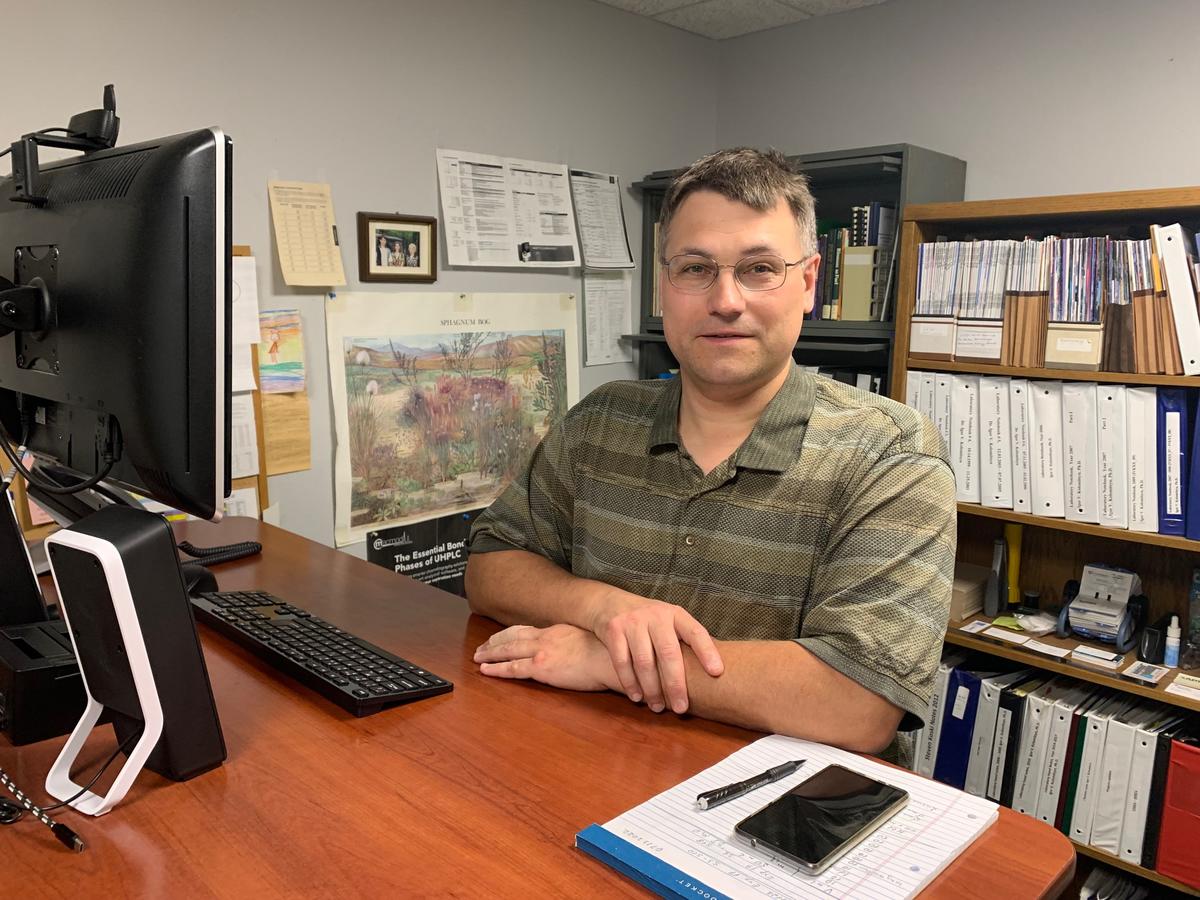When Ukraine declared independence following the collapse of the Soviet Union in 1991, Igor Kolomitsyn was two years into his organic chemistry degree at the National Technical University’s Kyiv Polytechnic Institute. His focus was on “green chemistry” with an interest in developing products and processes that minimize the use and generation of hazardous chemicals by using chemicals manufactured from renewable sources like biomass.
But paying his bills suddenly got very complicated. The Ukraine economy collapsed as the Soviet ruble was replaced with the Ukrainian karbovanets. (In 1996, it was replaced again by the hryvnia.) And amid the upheaval, Kolomitsyn enrolled in the University’s PhD program.
“The economic situation in Ukraine motivated me to search for opportunities while studying,” said Kolomitsyn. “I collaborated with industry and several research groups from Poland and Netherlands that led to my first Ukrainian patent related to green chemistry.”
Still working toward his doctorate in 1997, Kolomitsyn learned of an opportunity in UMD’s Chemistry Department and he accepted the temporary six-month position as a junior scientist with every intention of returning home to Ukraine.
“But I was also determined to finish my PhD thesis, publish and patent,” said Kolomitsyn. “My workdays were long, including Saturdays and holidays… fun time.”
But first he had to convince the Department of Organic Chemistry in Kyiv that he could execute the research independently and pass all necessary exams. He was awarded the doctorate degree in 2001, the year his daughter was born in the United States.
Home away from home
By late 1999, NRRI built its Chemical Extractives Laboratory and moved the research from UMD to the new lab. Kolomitsyn and other organic chemists continued development of proprietary processes to extract valuable natural chemicals from waste stream birch bark. Kolomitsyn and his family settled into life in the U.S.
“Naturally occurring organic chemicals, their structural complexity and their ability to be used by living organisms fascinates me,” said Kolomitsyn. “NRRI gave me the tools to research natural substrates like peat, peat lignin, wood and grass lignin and more, to develop a new generation of wastewater remediation materials.”
PFAS and peat
A current project – with industry partner American Peat Technology, LLC in Aitkin, Minn. – is developing a set of new natural anion exchange materials that selectively removes toxic Per- and Polyfluoroalkyl Substances (PFAS) from wastewater.
“It’s exciting to work on a solution that uses Minnesota resources wisely while tackling a complex environmental problem,” Kolomitsyn said. “If successful, it will lead to a new manufacturing facility to deliver this new technology and remediate impacted water resources.”
He appreciates NRRI’s diverse scientific expertise – chemists, metallurgists, engineers, biologists, ecologists – all within the organization. As Kolomitsyn develops new, natural materials he can often find a colleague with the expertise he needs to advance his project.
Central Support
Ordering chemicals is much more complicated than ordering standard office supplies, so Kolomitsyn relies on Purchasing Specialist Tammy Thomasson-Ehrhart to keep tabs on orders, especially important with the current supply and distribution challenges. And NRRI’s front desk team, Lisa Paczynski and Jenna Ballard, make sure that once the chemicals arrive, they get refrigerated, frozen or otherwise properly stored.
“We get a lot of help to keep my group on schedule,” said Kolomitsyn.
For Fun
When away from reaction flasks and analytical instruments, Kolomitsyn enjoys woodworking projects, challenging himself to build something he’s never tried before. He also has a large garden with prolific cucumber plants.
“So, every year I make pickled cucumbers using a Ukrainian recipe,” he said. “It’s very tasty and crunchy with garlic, dill flowers, horseradish leaves and black currant leaves.”
